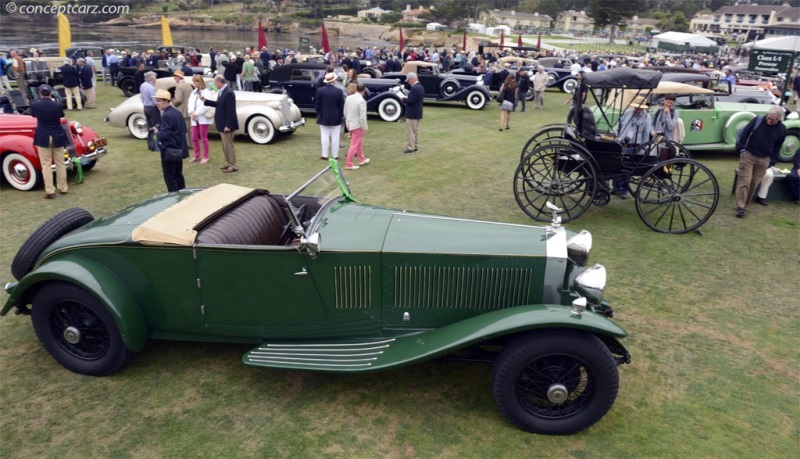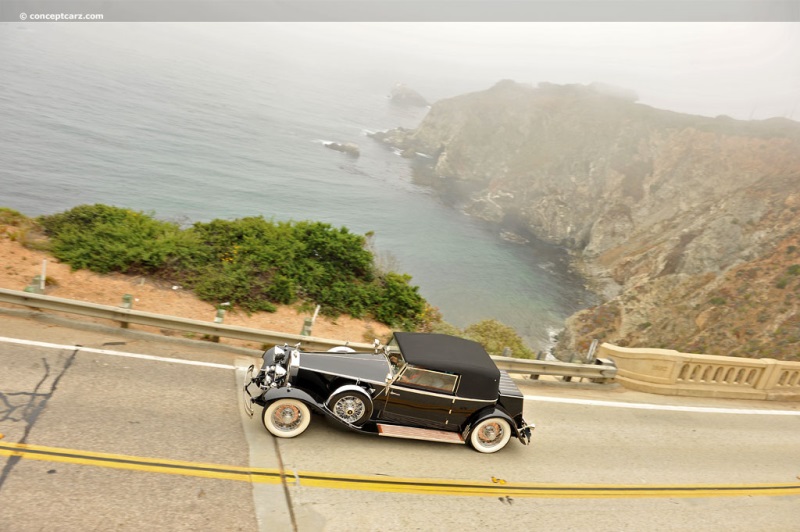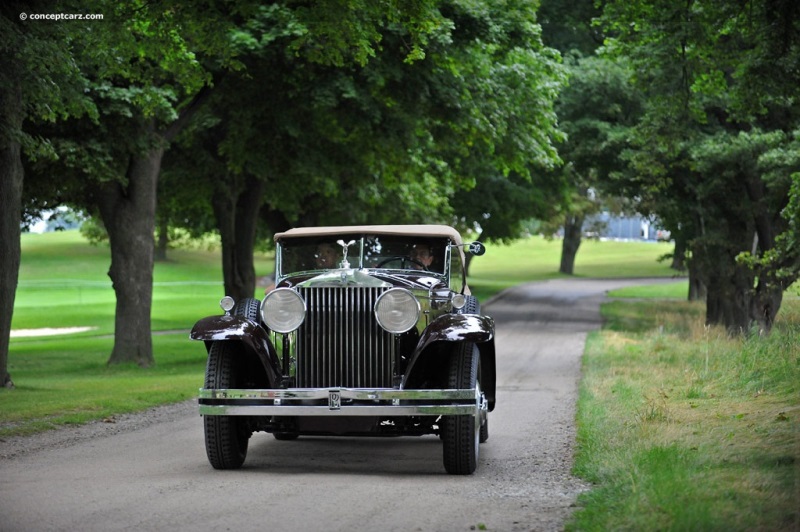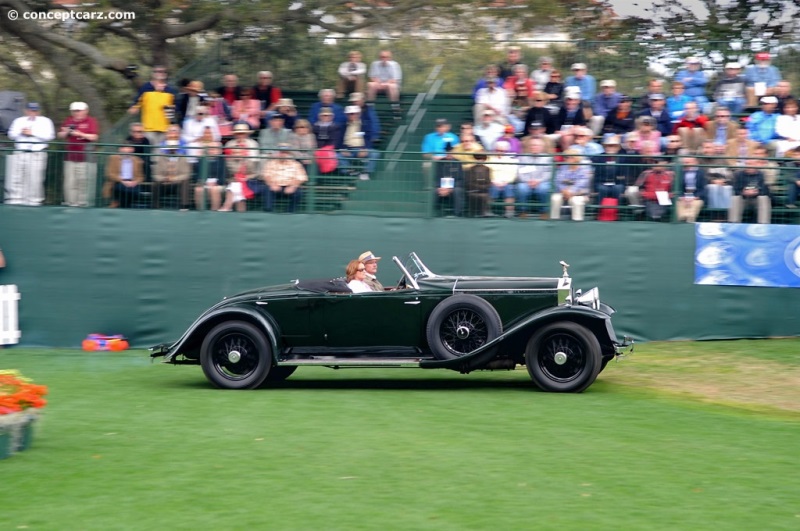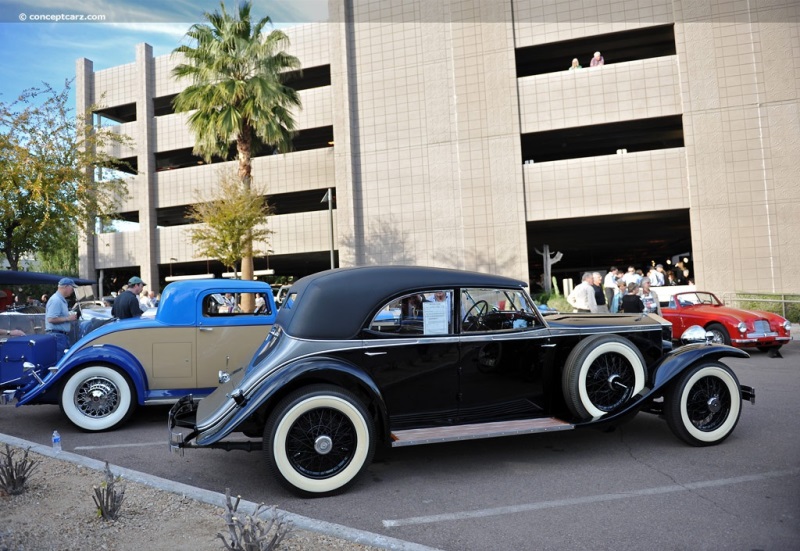The third and final of the Rolls-Royce's 40/50 hp, the Phantom II replaced the New Phantom (Phantom I) in 1929, and 1,681 were built by the time production ended in 1935. This figure includes 281 'Continental' versions built on a shorter wheelbase. Developed under the ever-watchful eye of company co-founder Henry Royce, the Phantom II had more in common with the company's 20 HP (Twenty) and was essentially a larger version of the 'junior' Twenty chassis. Its underslung rear axle allowed it to sit lower than the Phantom I and wheelbase sizes measured 144- and 150-inches. Body styles ranged from luxurious to sporty, and since Rolls-Royce only produced the rolling chassis, coachwork was made and fitted by independent coachbuilders, including Hooper, Windovers, Brewster, Park Ward, Mulliner, Thrupp & Maberly, and Carlton. Due to its hand-built construction, no two Phantom IIs are exactly alike. In keeping with its market position, the Phantom II was highly exclusive and an elite-level offering. Engine and Drivetrain
At the heart of the Phantom II was a refined 7.7-liter (7,668cc / 467.9 cubic-inch) pushrod-OHV (overhead valve) straight-6 engine that retained the cylinder dimensions and basic layout of the Phantom I's, with two blocks of three cylinders and an aluminum cylinder head common to both blocks. The magneto/coil dual ignition system also remained the same, but the combustion chambers were redesigned and were now of the cross-flow type, with inlet and exhaust manifolds on opposite sides. These modifications greatly enhanced performance, particularly of the Continental model, allowing them to accommodate heavier and more luxurious coachwork. With a single Updraft carburetor, the 6.7-liter engine produced approximately 130 horsepower at 3,000 RPM.
Henley Roadster by Brewster
View info and historyThe revised four-speed manual gearbox had synchromesh on third and top gears, and on gear 2 in 1935. The previous torque tube arrangement was replaced by an open driveshaft, a hypoid bevel final drive, and Hotchkiss drive.The suspension continued to use semi-elliptical leaf springs as on earlier 40/50 hp models, but the rear axle discarded the previous cantilever springs with semi-elliptical springs. Like the Phantom I, the Phantom II used four-wheel servo-assisted mechanical drum brakes.The Phantom II Continental
Rolls-Royce debuted the Phantom II Continental in late 1930, with H.I.F. 'Ivan' Evernden collaborating in its development with Henry Royce. A myriad of improvements and upgrades were made, including a raked steering column, a modified engine equipped with a higher-lift camshaft and increased compression, a taller rear-axle ratio, flatter springs for a lower stance and sportier handling, and twin Hartford auxiliary dampers upfront for ride control.
Henley Roadster by Brewster
View info and historyAs its name suggests, the Phantom II Continental offered high-speed, long-distance touring with speeds approaching 100 mph. The first 'Continental,' Under the experimental abbreviation 26EX, was a short-wheelbase Phantom II with compact coupé bodywork designed by Ivan Evernden and built by Barker & Co. Upon completion, Ivan Evernden and Don Carlos de Salamanca displayed the car at the Concours d'Elegance in Biarritz where they were awarded with the Grand Prix d'Honneur. Upon returning to the office, Evernden was informed that the sales department had prepared a brochure and cost structure for the new 'Phantom II Continental Saloon.'Most Continentals wore sport saloon coachwork, but bodies varied, including closed coupes, a pair of roadsters, and formal Sedanca de Villes. Although the list of coachbuilders also varied, most were bodied by British coachbuilders, such as Hooper, H.J. Mulliner, Barker, and Windovers. Others were clothed by Kellner of Paris, Brewster of New York City, and Martin & King of Sydney, Australia. U.S. Delivery Phantom II
Although Rolls-Royce closed its Springfield, Massachusetts operation in 1931, the U.S. remained an important market, meeting demand with a limited production run of purpose-built cars. Approximately 125 examples left the factory with left-hand drive configuration, identified by the AJS and AMS designation. Along with the U.S. and Canadian markets, left-hand-drive chassis were sold to customers in Denmark, Monaco, Poland, and Switzerland.
by Daniel Vaughan | Oct 2023
At the heart of the Phantom II was a refined 7.7-liter (7,668cc / 467.9 cubic-inch) pushrod-OHV (overhead valve) straight-6 engine that retained the cylinder dimensions and basic layout of the Phantom I's, with two blocks of three cylinders and an aluminum cylinder head common to both blocks. The magneto/coil dual ignition system also remained the same, but the combustion chambers were redesigned and were now of the cross-flow type, with inlet and exhaust manifolds on opposite sides. These modifications greatly enhanced performance, particularly of the Continental model, allowing them to accommodate heavier and more luxurious coachwork. With a single Updraft carburetor, the 6.7-liter engine produced approximately 130 horsepower at 3,000 RPM.
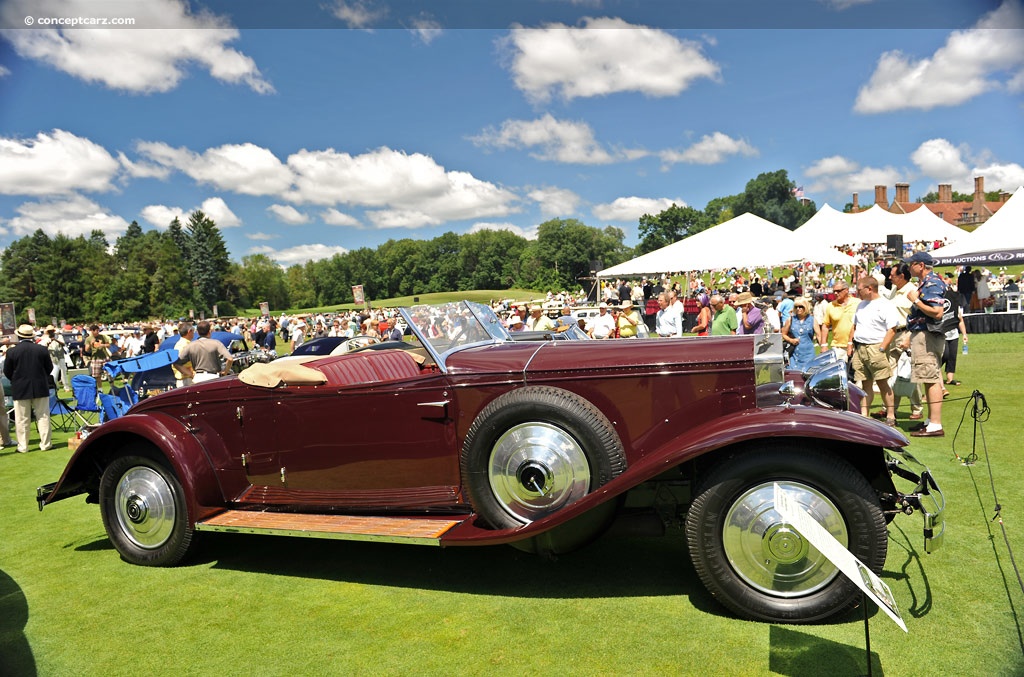
Henley Roadster by Brewster
View info and history
Rolls-Royce debuted the Phantom II Continental in late 1930, with H.I.F. 'Ivan' Evernden collaborating in its development with Henry Royce. A myriad of improvements and upgrades were made, including a raked steering column, a modified engine equipped with a higher-lift camshaft and increased compression, a taller rear-axle ratio, flatter springs for a lower stance and sportier handling, and twin Hartford auxiliary dampers upfront for ride control.
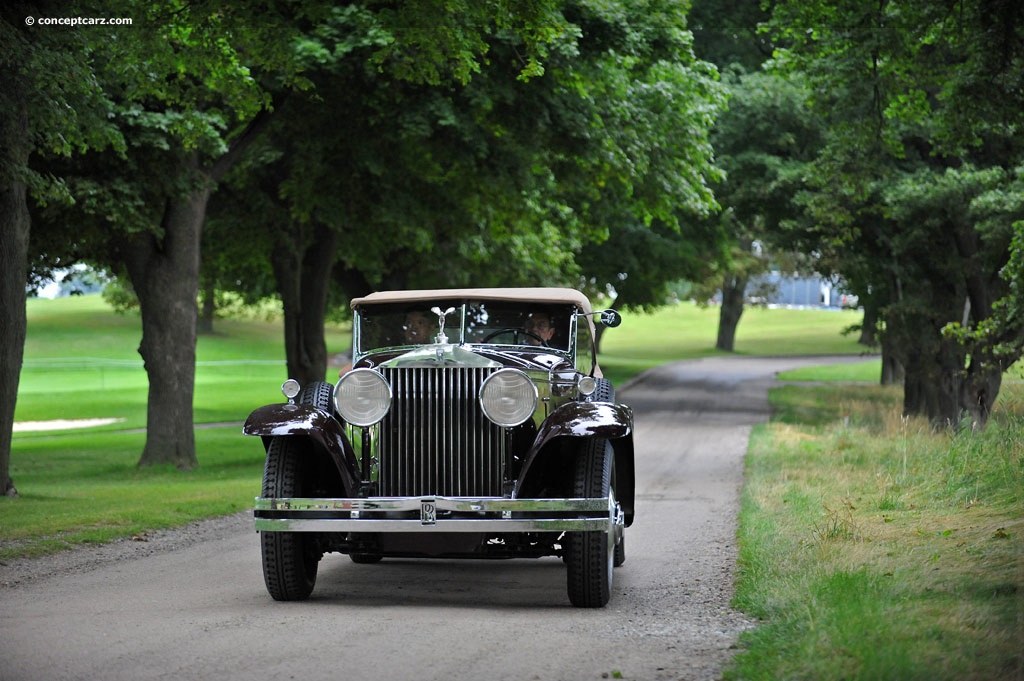
Henley Roadster by Brewster
View info and history
Although Rolls-Royce closed its Springfield, Massachusetts operation in 1931, the U.S. remained an important market, meeting demand with a limited production run of purpose-built cars. Approximately 125 examples left the factory with left-hand drive configuration, identified by the AJS and AMS designation. Along with the U.S. and Canadian markets, left-hand-drive chassis were sold to customers in Denmark, Monaco, Poland, and Switzerland.
by Daniel Vaughan | Oct 2023
Related Reading : Rolls-Royce Phantom II / Phantom II Continental History
The Phantom II was the first completely new car since the 20HP seven years earlier. The Phantom II was still rated 4050 HP but was lower and the springing half-elliptic all around. The car, although to Royces design and specification, was mainly the work of his West Wittering design team and included many innovations and a redesigned engine that, with the gearbox, was now one unit. The introduction....
Continue Reading >>
Continue Reading >>
Related Reading : Rolls-Royce Phantom II / Phantom II Continental History
The Rolls-Royce Phantom II was very similar to the Phantom I in many ways, but brought improvements such as a higher horsepower rating and the removal of the traditional torque-tube drive. Instead, the engine and gearbox were constructed in unit with each other rather than being separate. The Autovac was now using an engine-driven pump. A new water-heated induction system was used. The Battery....
Continue Reading >>
Continue Reading >>
Similar Automakers
Similarly Sized Vehicles
from 1932
1932 Rolls-Royce Phantom II Vehicle Profiles
Recent Vehicle Additions
Performance and Specification Comparison
Phantom II / Phantom II Continental Specification Comparison by Year
Year
Production
Wheelbase
Engine
Prices
144.00 in., 150.00 in.
6 cyl., 467.93 CID., 108.00hp
6 cyl., 467.93 CID., 120.00hp
6 cyl., 467.93 CID., 120.00hp
$9,500 - $9,500
Related Automotive News

Rolls-Royce Black Badge: Born from heritage
Rolls-Royce reflects on commissions from highly prominent clients
Three rebellious motor cars spanning four decades of marques 117-year history
Disruptive clients have embraced Rolls-Royces near-limitless Bespoke possibilities
Finished entirel...

Alfa Romeo Named Best of Show at the 68th Pebble Beach Concours d'Elegance
Touring-Bodied Alfa Romeo 8C 2900B Named Best of Show at the 68th Pebble Beach Concours dElegance
PEBBLE BEACH, Calif. (August 26, 2018) — After an intense competition that drew diverse cars from around the globe, the coveted gold Best of Show...

1929 Mercedes-Benz S Barker Tourer Named Best Of Show At The 67Th Pebble Beach Concours d'Elegance
PEBBLE BEACH, Calif. (August 20, 2017) — Just a week ago, Bruce R. McCaws 1929 Mercedes-Benz S Barker Tourer emerged from the restoration shop of Steve Babinsky in Lebanon, New Jersey. Today, having crossed the country, the boattailed beauty captured...

Lancia Named 2016 Best of Show
PEBBLE BEACH, Calif. (August 21, 2016) — The 2016 Pebble Beach Concours dElegance concluded with first-time entrant Richard Mattei lifting the top prize high overhead soon after his 1936 Lancia Astura Pinin Farina Cabriolet was named Best of...

2015 Pebble Beach Concours d'Elegance Best of Show
PEBBLE BEACH, Calif. (August 17, 2015) -- An Italian Isotta Fraschini Tipo 8A Cabriolet that once turned heads and garnered top prizes in the classic era glided to victory at the 65th Pebble Beach Concours dElegance on Sunday.
The competition...
























